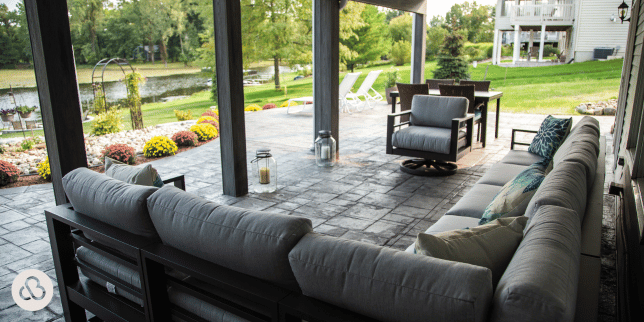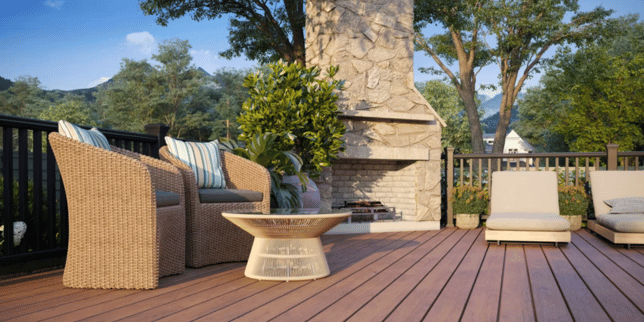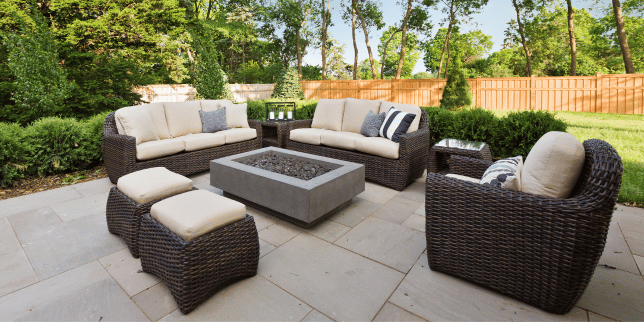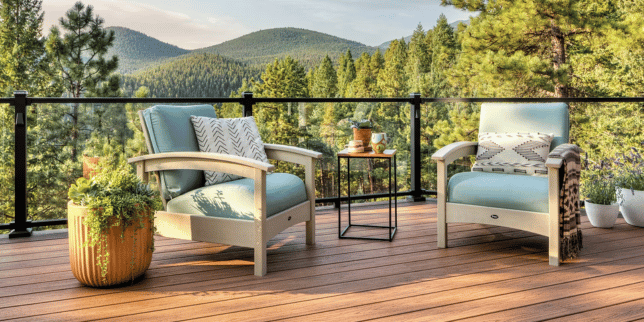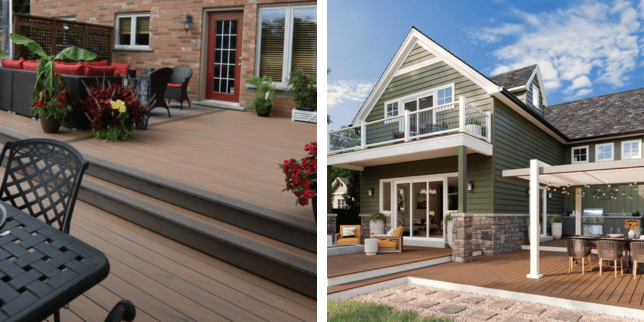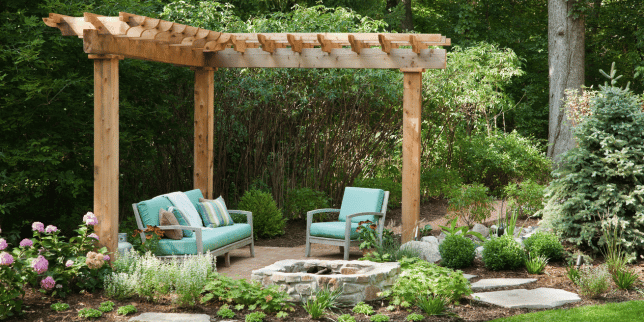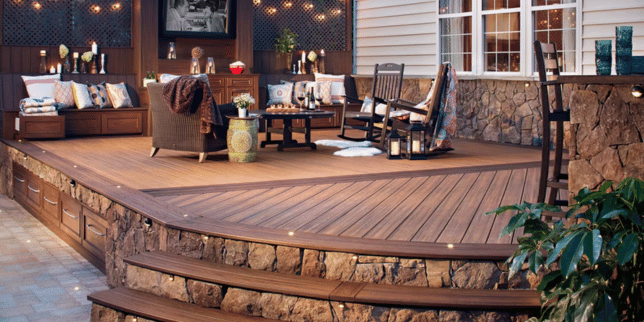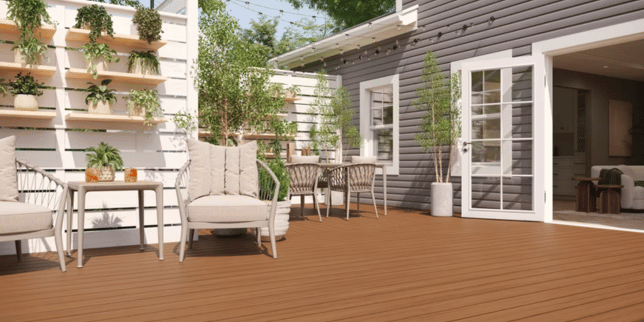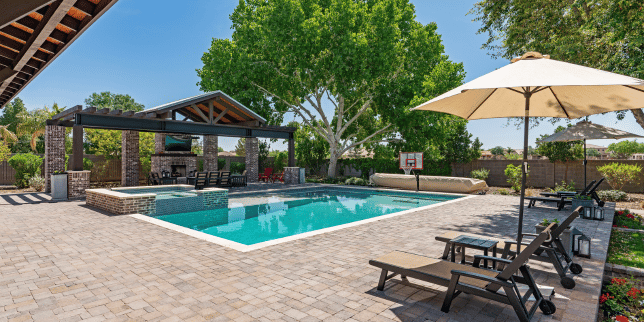Picture a beautiful Michigan summer day. You’re enjoying time on your deck with your family and friends. All is right with the world, when suddenly you snag your foot on a wood splinter sticking out from your old wood deck, and your fun day is interrupted.
While a deck is a fun place to relax and make great memories with your loved ones, it can pose safety hazards if it isn’t designed with everyone’s safety in mind, especially for young children and seniors.
If you aren’t sure how to design a deck with safety in mind, without losing eye-catching aesthetics, we’re here to help.
As professional deck builders in the Mid-Michigan area, we have decades of experience designing and building beautiful decks for homeowners like you. We’ve helped hundreds of clients design decks with safety consciousness as well as appealing aesthetics in mind.
In this article, you’ll learn important safety tips to consider when designing your outdoor deck so that you and your loved ones can spend your time enjoying your deck without worrying about safety concerns.
Use high-quality materials and professional construction.
Your deck can have all the safety features available on the market but if the supporting structure was built with sub-par materials and construction methods, it’s safe for no one.
Industry professionals understand that building a deck safely requires a detailed understanding of building regulations, a thorough design process, and the use of high-quality materials.
Making sure your deck’s structure is strong ensures every other safety design tip provided in this article is supported by a well-built framework.
While it is possible to design and build your own deck, we strongly advise you to research and understand code-compliant construction methods and materials. Designing and building a deck yourself can be a rewarding experience, but it will present unique challenges.
Design your deck with the safety of children in mind.
Select vertical balusters for your deck’s railing.
While this may not initially seem like a design option that lends itself to safety, vertical balusters on your deck’s railing are much safer than horizontal ones.
For toddlers and small children, horizontal balusters are much easier to climb, posing a potential falling hazard. Vertical balusters prevent children from doing this and are better at ensuring their safety.
Balusters are the small pillars on deck railings that are evenly spaced between the larger support posts. The most common baluster designs are vertical and horizontal.
Building codes require that railing balusters be no more than 4” apart, spacing them close enough to stop young children from passing through the gap.
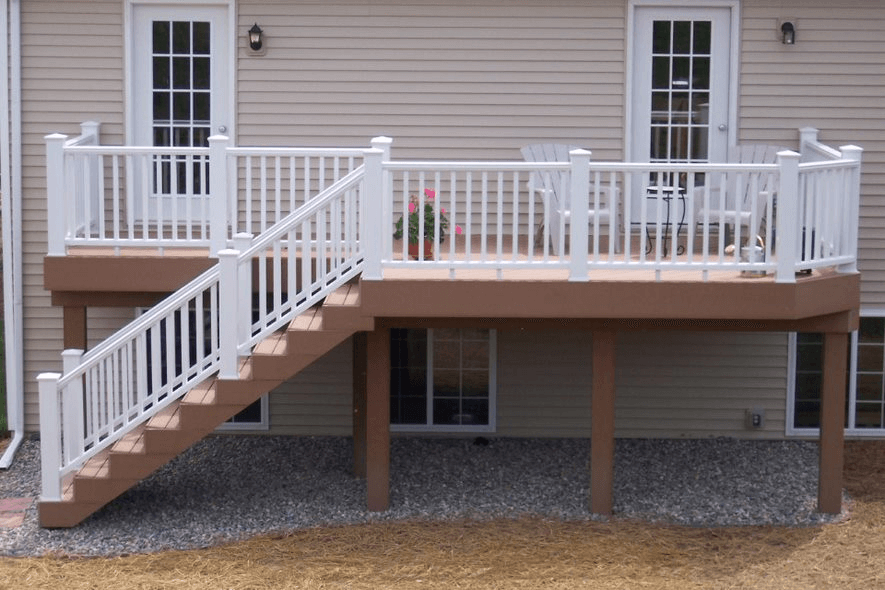
Install a locking gate at the top of your stairs.
Stairs present another potential fall hazard to younger children. Without a mechanism in place to prevent this, stairs can pose a serious safety risk for children who are not continually watched while they’re on your deck.
A deck design that addresses this safety risk is a lockable gate at the top of your stairs. Most gates integrate seamlessly into your selected railing style and are available in multiple configurations such as a latch, barn door, or drop-rod designs.
Locks on deck gates are specifically designed to be high enough that small children cannot reach them.
Using this safety tip on your deck ensures that your stairs don’t pose a fall hazard to young ones.
Design your deck with composite boards.
Composite decking offers safety features that are not present in wood. Composite protects from hazards including:
Wood splinters. Slivers are painful injuries that you don’t want to deal with at summer gatherings, especially with kids or guests who gather on your deck. Composite decking materials are designed to not splinter, keeping your feet safe from stray slivers that could otherwise injure you.
Nails or screws sticking out. Wood deck boards are attached with screws or nails that drive through the surface. Over time, these can begin to loosen and stick out as your deck warps, expands, and contracts.
Using hidden fasteners with composite deck boards can help you avoid stepping on errant nails or screws that can protrude above your deck’s surface.
Add an outdoor rug to your deck.
Rugs can add style, texture, and color to your deck space. They also have safety benefits which prevent:
Higher temperature deck surface. Composite, and particularly darker composite decking, can get uncomfortably warm under direct sunlight. Adding an outdoor rug to your deck can provide an oasis of cooler comfort for you and your guests.
Objects from getting caught between your deck boards. If you anticipate small children or pets will be using your deck, it might be a smart idea to add rugs to prevent small toes and collars from getting caught between your deck boards.
Small items falling through your deck boards. From AirPods to your heirloom ring, any small item can find itself falling through the cracks of your deck. A rug can help to prevent the loss of small valuables in the first place.
Outdoor dining areas and outdoor kitchens on your deck are fantastic places to add a rug. A rug in these areas has the added benefit of preventing food from falling through your deck cracks, which can become a safety hazard of its own as it may draw wild animals to the area.
Wrap your deck in a critter guard and skirting.
Food that is left to sit under your deck can attract wild animals and varmints to your home. Naturally, this presents a host of unpleasant problems that are preferably avoided.
Adding a critter barrier and skirting around your deck can help prevent animals from accessing your space.
A critter guard is a metal mesh that is specifically designed to stop critters from getting under it. Skirting is solid vertical decking material installed in conjunction with the critter barrier which adds to your deck’s aesthetic appeal.
Avoid a multi-level deck design.
While multi-level decks give your outdoor space a unique aesthetic appeal, they can be unsafe for people who have difficulty navigating steps without railings, such as seniors and young children.
This potential hazard only gets worse as it gets darker. It becomes increasingly difficult to know where the deck level changes.
Opting for a deck design that has a consistent surface level is a more safety-conscious choice.
Add lights to your outdoor living space.
Lights make your deck safer to use at night as well as add beauty to the space after dark.
Lighting can make it easier to see steps, brighten high-traffic entertaining spaces, and make it simpler to navigate for someone who is a first time guest or unfamiliar with the space.
Deck lighting is available in many different styles and functions to fit not only your design needs but also your safety requirements. Outdoor lighting can be placed on post caps, stair risers, and recessed into your deck’s boards.
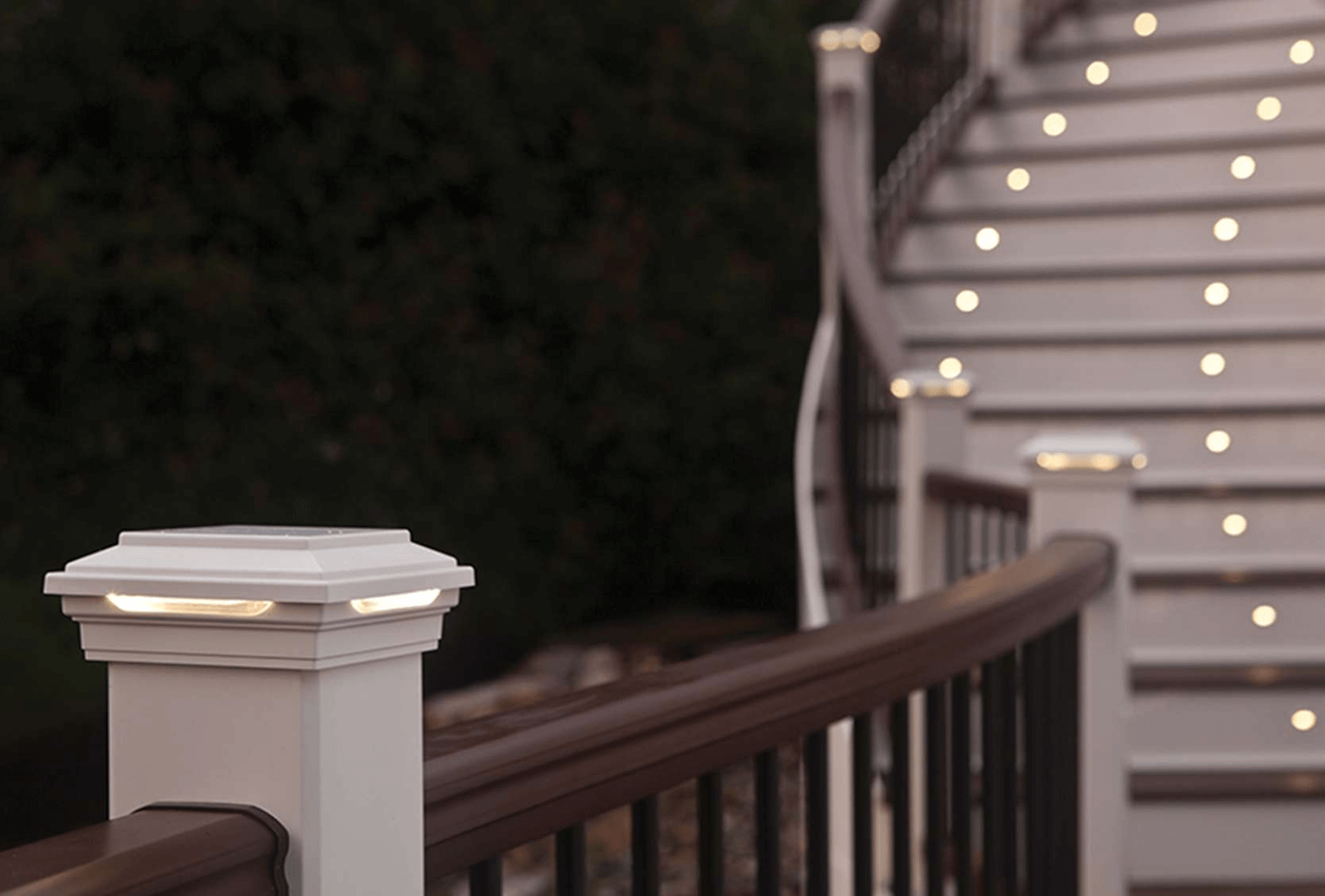
Next steps for designing your outdoor deck using these safety tips
Outdoor decks are an excellent addition to any home, providing you with a space to gather, relax, and make memories with your loved ones.
However, it's important to keep in mind that a poorly designed deck can pose serious safety hazards for people of all ages, especially young children and seniors.
Using these design safety tips, you can take every possible precaution to make sure your outdoor living space helps keep people safe. This ensures you and your guests can create lasting memories, confident that everyone’s well-being is also secure.
As a mid-Michigan deck design and building company, we have over 15 years of experience building hundreds of beautiful decks and outdoor living spaces. We value incorporating safety consciousness as well as appealing aesthetics into our designs so that you can enjoy your home with loved ones for years to come.
If you are in the planning phase for your upcoming deck project and want to know if Custom Built could be the right fit for you, reach out to one of our project development advisors. We’d be happy to discuss how we can build you a beautiful and safe deck or outdoor living space.
For other safety hazards of older or existing decks, read our list of signs to look for that indicate your deck requires an inspection.
To learn more about designing and building your deck, read the following resources:
Michael brings over 2 decades of building and remodeling experience to his position as the Owner and Visionary of Custom Built. Michael’s passion to make an impact on the home building industry has led him to serve for over ten years at the local and state Home Builders Association, culminating as President of the HBA of Michigan in 2020.











